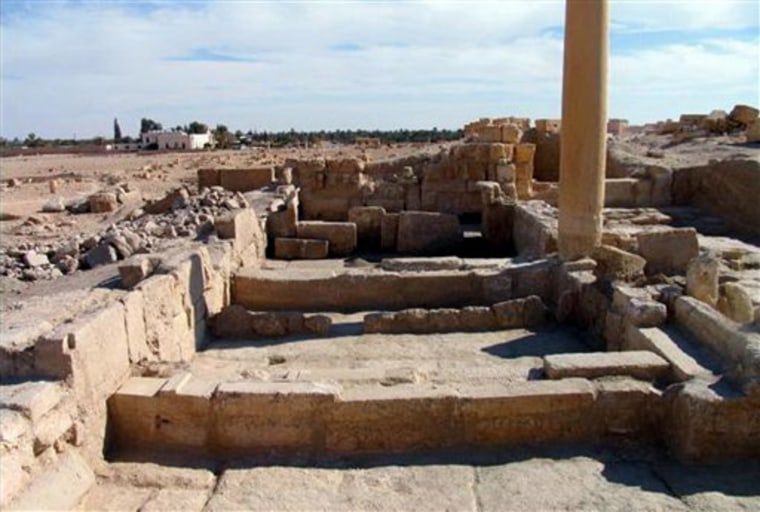Archaeologists in central Syria have unearthed remnants of a 1,200-year-old church believed to be the largest ever discovered in this Mideast country, an antiquities official said Thursday.
Walid al-Assaad, the head of the Palmyra Antiquities and Museums Department said the church, dating back to the 8th century, was discovered recently by a joint Syrian-Polish archaeological team.
The discovery took place at an excavation site in the ancient town of Palmyra, some 153 miles northeast of the capital Damascus, the official said but did not provide a more specific timing.
The church is the fourth to be discovered in Palmyra — once a regional trade center and now an archaeological treasure trove that even contains oldest layers from the prehistoric era in Syria.
However, al-Assaad said the church was the biggest of its kind to be found so far — it's base measuring an impressive 51 by 30 yards. The church columns were estimated to be 20 feet tall, with the height of the wooden ceiling more than 49 feet. A small amphitheater was found in the church's courtyard where the experts believe some Christian rituals were practiced.
"In the northern and southern parts of the church there are two rooms that are believed to have been used for baptisms, religious ceremonies, prayers and other rituals," added al-Assaad.
Palmyra, said to have been founded by King Solomon, was the center of an Arab servant state to the Roman empire and thrived on the caravan trades across the desert to Mesopotamia and Persia, especially after the decline of ancient Petra in Jordan.
The city emerged to become a powerful trade center after the Romans took control of it, serving as a link between the ancient Orient and Mediterranean countries. Under Queen Zenobia, the city rebelled against Roman rule and briefly carved out an independent desert Arab kingdom before being re-conquered and razed by the Romans.
The Polish team has been working in Palmyra since 1958. It has made many significant historical discoveries.
